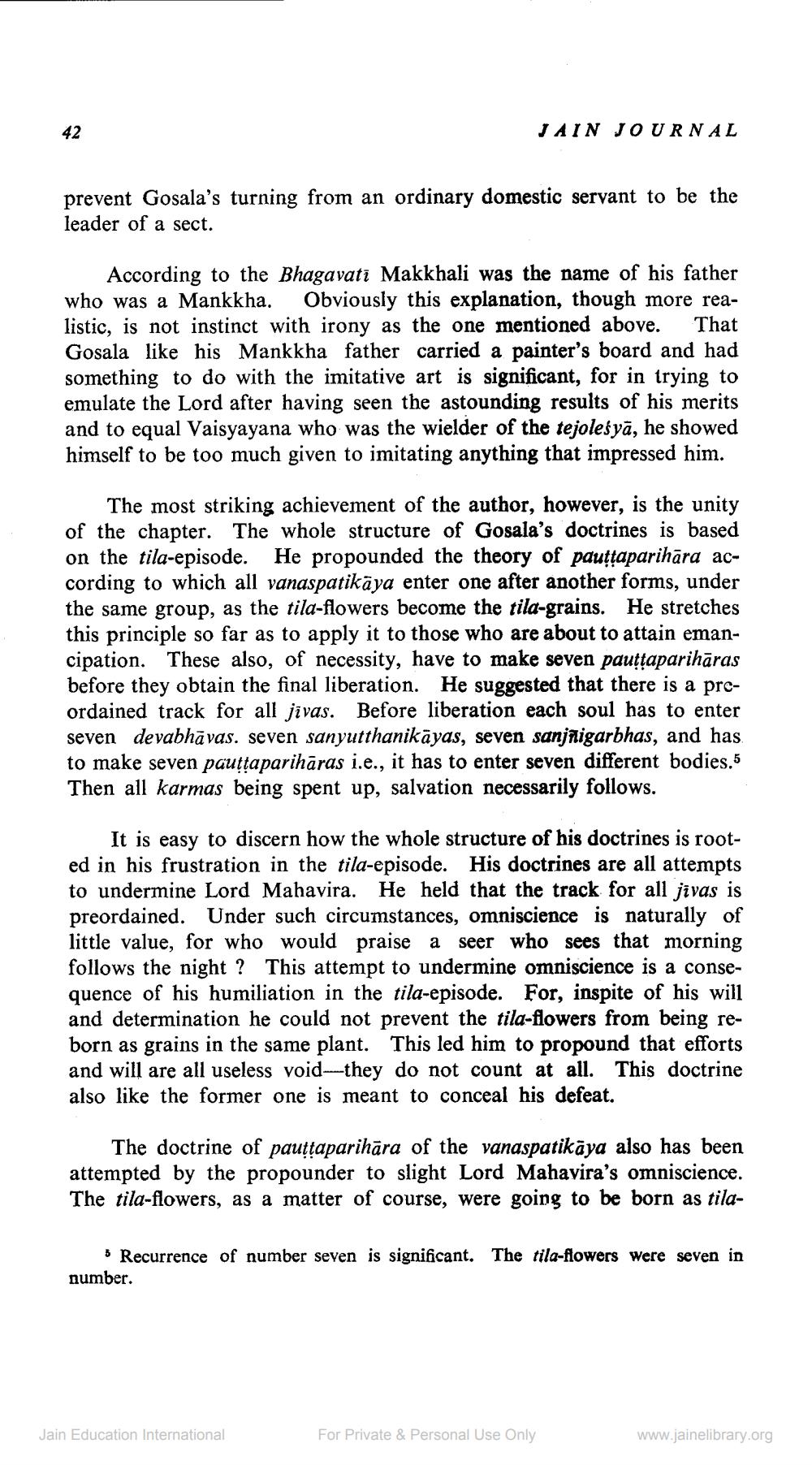________________
LAIN JOURNAL
prevent Gosala's turning from an ordinary domestic servant to be the leader of a sect.
According to the Bhagavati Makkhali was the name of his father who was a Mankkha. Obviously this explanation, though more realistic, is not instinct with irony as the one mentioned above. That Gosala like his Mankkha father carried a painter's board and had something to do with the imitative art is significant, for in trying to emulate the Lord after having seen the astounding results of his merits and to equal Vaisyayana who was the wielder of the tejoleśyā, he showed himself to be too much given to imitating anything that impressed him.
The most striking achievement of the author, however, is the unity of the chapter. The whole structure of Gosala's doctrines is based on the tila-episode. He propounded the theory of pauttaparihāra according to which all vanaspatikāya enter one after another forms, under the same group, as the tila-flowers become the tila-grains. He stretches this principle so far as to apply it to those who are about to attain emancipation. These also, of necessity, have to make seven pauttaparihāras before they obtain the final liberation. He suggested that there is a preordained track for all jivas. Before liberation each soul has to enter seven devabhāvas. seven sanyutthanikāyas, seven sanjñigarbhas, and has to make seven pauttaparihāras i.e., it has to enter seven different bodies.5 Then all karmas being spent up, salvation necessarily follows.
It is easy to discern how the whole structure of his doctrines is rooted in his frustration in the tila-episode. His doctrines are all attempts to undermine Lord Mahavira. He held that the track for all jīvas is preordained. Under such circumstances, omniscience is naturally of
e value, for who would praise a seer who sees that morning follows the night ? This attempt to undermine omniscience is a consequence of his humiliation in the tila-episode. For, inspite of his will and determination he could not prevent the tila-flowers from being reborn as grains in the same plant. This led him to propound that efforts and will are all useless void they do not count at all. This doctrine also like the former one is meant to conceal his defeat.
The doctrine of pauttaparihāra of the vanaspatikāya also has been attempted by the propounder to slight Lord Mahavira's omniscience. The tila-flowers, as a matter of course, were going to be born as tila
The tila-flowers were seven in
$ Recurrence of number seven is significant. number.
Jain Education International
For Private & Personal Use Only
www.jainelibrary.org




